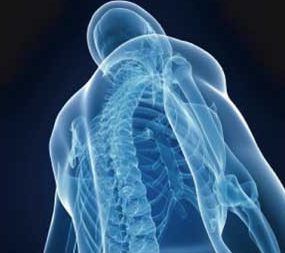With the recent medical education push toward prevention and treatment of osteoporosis more and more people are searching for ways to naturally prevent this debilitating disease.
Osteoporosis bone fractures, although not life-threatening, does result in death of the sufferer approximately 30% of the time. Patients who suffer from hip fractures also have a high risk of disability and poor motor function.
Preventing Osteoporosis via Nutrition
Nutritional guidelines for healthy bones will help you to prevent osteoporosis bone fractures and worsening of your condition. Fortunately, osteoporosis isn’t a have or have not disease.
As people age over the age of 35 they begin to lose bone faster than it can be manufactured by the body. The question usually isn’t do you lose bone but at what rate and can you slow the progress.
Many people understand the role that calcium plays in the nutritional guidelines for healthy bones. What they may not realize is that dairy products aren’t the only place to get a good source of calcium.
Healthy eating guidelines recommend that you consume most of your calcium from plant sources instead of dairy since dairy products are also high in saturated fats that lead to heart disease, stroke, diabetes, obesity, and immune mediated illnesses.
In fact, bone loss is accelerated by eating to much animal protein. Milk is liquid protein; sometimes referred to as liquid meat.
Good Sources of Calcium
Some good plant sources of calcium include spinach, kale, broccoli, soybean products and some legumes. The American Heart Association has published studies that show that people absorb calcium better from vegetable sources rather than non-vegetable sources.
The Importance of Vitamin D
Vitamin D is another vitamin in the arsenal of nutritional guidelines for healthy bones. The first study done in 1992 was published in the New England Journal of Medicine and studied 3270 women between 69 and 106 years old.
The women in the study group were given Vitamin D3 supplements and at the end of the 18 month period the women who received the supplements had 43% decreased hip fractures and 32% lower non-vertebral fractures. The results of this study were repeated in 1997 and published again in the New England Journal of Medicine.
Don’t Forget Lysine
Nutritional guidelines for healthy bones include the intake of lysine which helps in the absorption of calcium.
Dr. Roberto Civitello of Washington University was published in Nutrition 1992 and believes its possible to absorb more calcium by eating foods that are also rich in lysine.
Vitamin K Builds Bone
Research has found that Vitamin K has a role in building bone as we age. Vitamin K is a fat soluable vitamin that is essential for the functioning of several proteins important in blood clotting.
It also appears to be important in the ability of minerals to bind together forming bone.
There are two forms of Vitamin K K1 and K2. K1 is synthesized from plants which we eat. Vitamin K2 is synthesized in animals, including humans, from the bacteria in the intestines.
There are some unique pathways for the synthesis of Vitamin K. Vitamin K2 is found in higher concentration than K1 in certain organs of the body, including the liver which all suggests that there is more to be discovered about the synthesis and use of Vitamin K in the body.
The nutritional guidelines for healthy bones would then suggest that eating a diet rich in calcium, Vitamin D, Vitamin K and lysine will help to keep your bones healthy and strong.
Protect Your Bones & Help Prevent Osteoporosis
Xtend-Life Bone Support is a highly advanced formula containing 11 specific active ingredients to help strengthen and protect your skeletal system, for improved posture, mobility, strength, reduced pain, and reduced risk of degenerative disease.
It is not a typical ‘supermarket’ bone formula with limited activity and benefits. Most importantly it contains ingredients that will give you the most effective natural protection against bone density loss as you age.
Bone density loss can lead to fractures, hip replacements and often premature death brought on by the trauma of a broken hip. Together with a good diet and moderate weight-bearing exercise, Bone Support can provide the help you need to reduce the risk of fractures and build denser and stronger bones.
Learn more about Bone Support now.
Why do we promote this?


 Fill out the form below to sign up to our free natural health and healing newsletter and stay up to date on our latest articles about holistic healing therapies and effective home remedies for common ailments. As a thank you for joining our newsletter, we’ll also send you
Fill out the form below to sign up to our free natural health and healing newsletter and stay up to date on our latest articles about holistic healing therapies and effective home remedies for common ailments. As a thank you for joining our newsletter, we’ll also send you